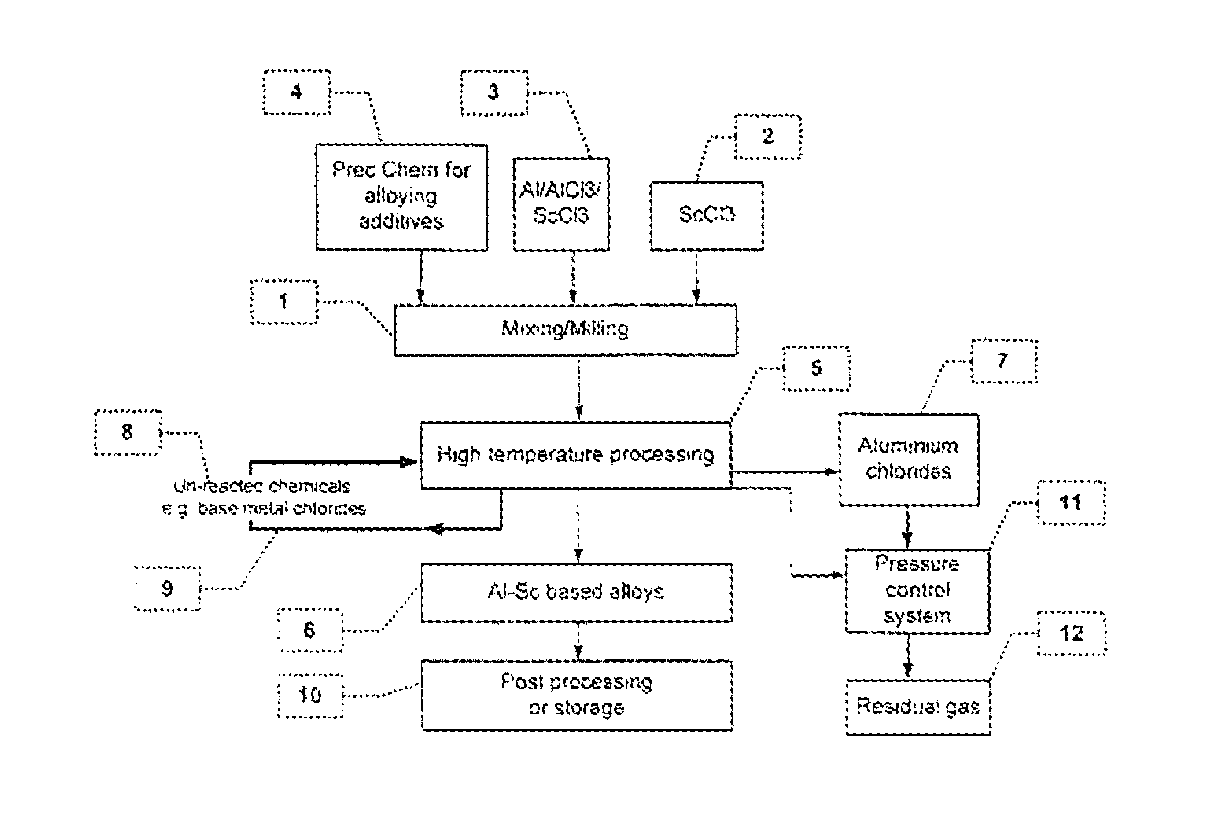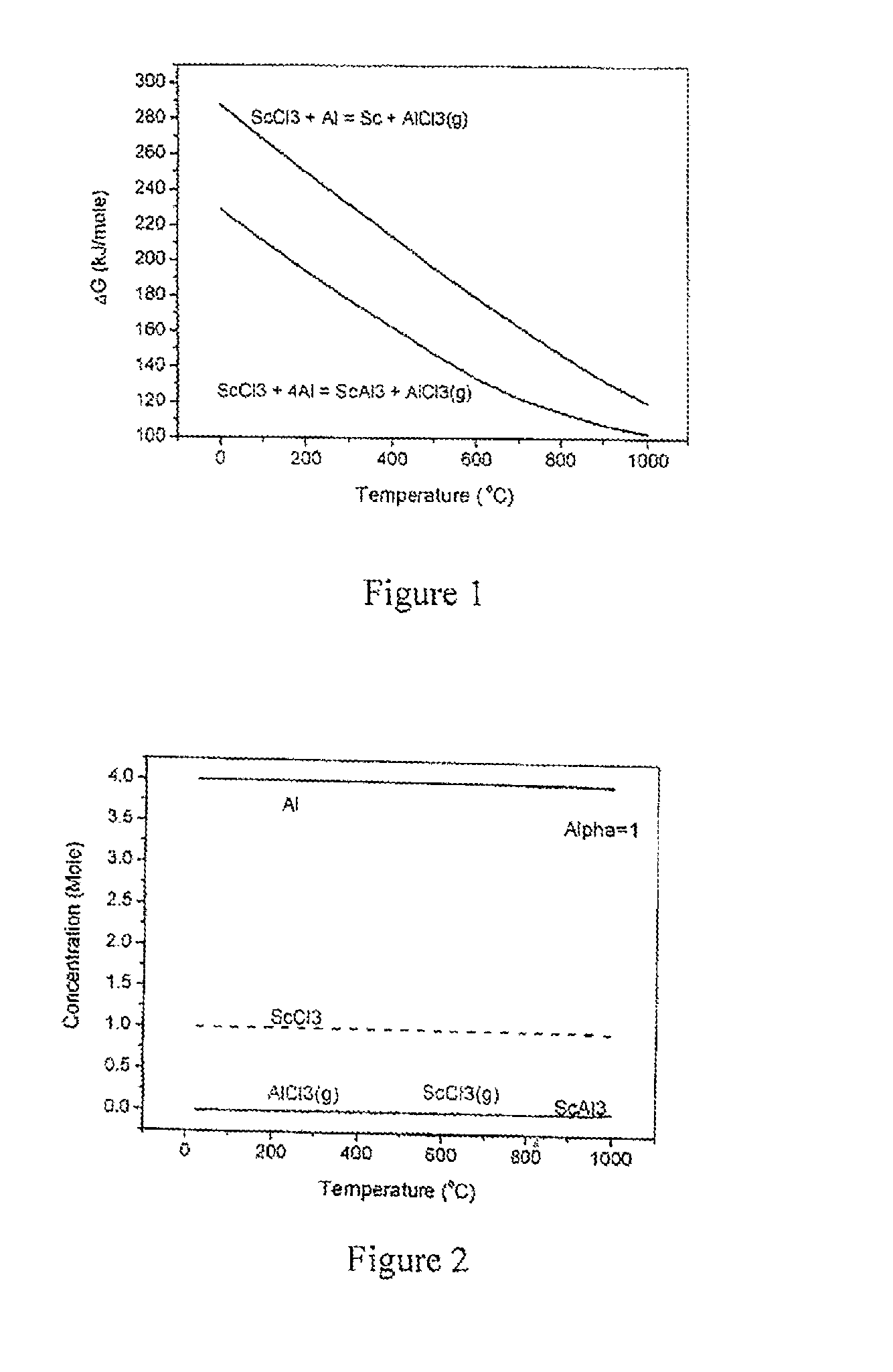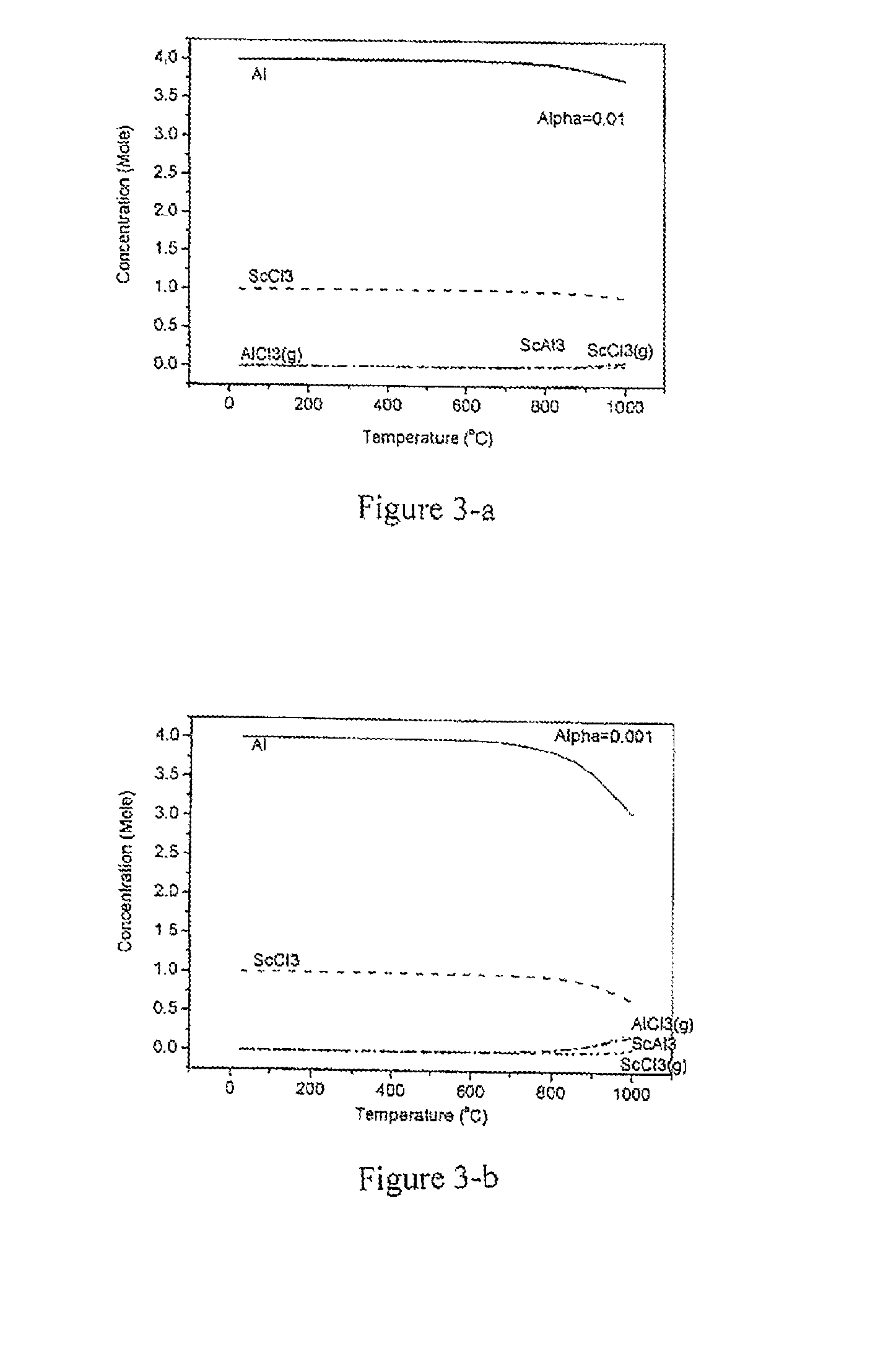Production of aluminium-scandium alloys
- Summary
- Abstract
- Description
- Claims
- Application Information
AI Technical Summary
Benefits of technology
Problems solved by technology
Method used
Image
Examples
example 1
Production of Al3Sc Powder
[0134]5 g of Al powder with a mean particle size of less than 15 microns is mixed with ScCl3 powder at a molar ratio of 4Al to 1ScCl3. The materials are then placed inside a quartz tube and heated at temperatures between 600° C. and 900° C. at a pressure less than 100 mbar. The temperature is first held at 600° C. for 10 minutes, then increased to 650° C. for 10 minutes and to 700° C. for 10 minutes and then to 800° C. for 10 minutes and 900° C. for 10 minutes. The materials are then discharged and analysed. The product is a powder made of Al3Sc with a small amount of Sc. FIG. 8 shows an XRD spectrum of the materials, clearly indicating the dominance of lines corresponding to Al3Sc.
example 2
Production of Al3Sc Powder
[0135]5 g of Al powder with a mean particle size of less than 15 microns are mixed with ScCl3 powder at a mole ratio of 4Al to 1ScCl3. The materials are then placed inside a quartz tube and heated at temperatures between room temperature and 900° C. at a pressure less than 10 mbar. The temperature is increased by steps of 100° C. with a total heating time of 60 minutes. The materials are then discharged and analysed. The product is a powder made of Al3Sc.
example 3
Production of Al3(Sc—Zr Powder)
[0136]5 g of Al powder with a mean particle size of less than 15 microns are mixed with ScCl3 powder and ZrCl4 powder at a mole ratio of 4Al to 0.5 ScCl3 and 0.5 ZrCl4. The materials are then placed inside a quartz tube and heated at temperatures between room temperature and 900° C. at a pressure less than 10 mbar. The temperature is increased by steps of 100° C. with a total heating time of 60 minutes. The materials are then discharged and analysed. The product is a powder made of Al3(Sc—Zr).
PUM
| Property | Measurement | Unit |
|---|---|---|
| Temperature | aaaaa | aaaaa |
| Temperature | aaaaa | aaaaa |
| Temperature | aaaaa | aaaaa |
Abstract
Description
Claims
Application Information
 Login to View More
Login to View More - R&D
- Intellectual Property
- Life Sciences
- Materials
- Tech Scout
- Unparalleled Data Quality
- Higher Quality Content
- 60% Fewer Hallucinations
Browse by: Latest US Patents, China's latest patents, Technical Efficacy Thesaurus, Application Domain, Technology Topic, Popular Technical Reports.
© 2025 PatSnap. All rights reserved.Legal|Privacy policy|Modern Slavery Act Transparency Statement|Sitemap|About US| Contact US: help@patsnap.com



